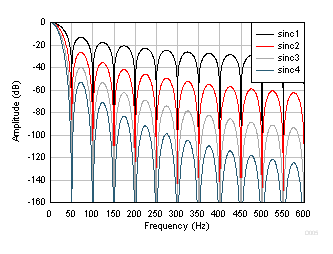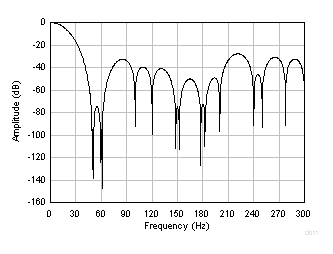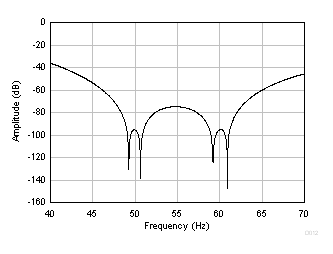SBAA532A February 2022 – March 2024 ADS1119 , ADS1120 , ADS1120-Q1 , ADS112C04 , ADS112U04 , ADS1130 , ADS1131 , ADS114S06 , ADS114S06B , ADS114S08 , ADS114S08B , ADS1158 , ADS1219 , ADS1220 , ADS122C04 , ADS122U04 , ADS1230 , ADS1231 , ADS1232 , ADS1234 , ADS1235 , ADS1235-Q1 , ADS124S06 , ADS124S08 , ADS1250 , ADS1251 , ADS1252 , ADS1253 , ADS1254 , ADS1255 , ADS1256 , ADS1257 , ADS1258 , ADS1258-EP , ADS1259 , ADS1259-Q1 , ADS125H01 , ADS125H02 , ADS1260 , ADS1260-Q1 , ADS1261 , ADS1261-Q1 , ADS1262 , ADS1263 , ADS127L01 , ADS130E08 , ADS131A02 , ADS131A04 , ADS131E04 , ADS131E06 , ADS131E08 , ADS131E08S , ADS131M02 , ADS131M03 , ADS131M04 , ADS131M06 , ADS131M08
- 1
- Abstract
- Trademarks
- 1Bridge Overview
- 2Bridge Construction
- 3Bridge Connections
- 4Electrical Characteristics of Bridge Measurements
- 5Signal Chain Design Considerations
-
6Bridge Measurement Circuits
- 6.1 Four-Wire Resistive Bridge Measurement with a Ratiometric Reference and a Unipolar, Low-Voltage (≤5 V) Excitation Source
- 6.2 Six-Wire Resistive Bridge Measurement With a Ratiometric Reference and a Unipolar, Low-Voltage (≤ 5 V) Excitation Source
- 6.3 Four-Wire Resistive Bridge Measurement With a Pseudo-Ratiometric Reference and a Unipolar, High-Voltage (> 5 V) Excitation Source
- 6.4 Four-Wire Resistive Bridge Measurement with a Pseudo-Ratiometric Reference and Asymmetric, High-Voltage (> 5 V) Excitation Source
- 6.5 Four-Wire Resistive Bridge Measurement With a Ratiometric Reference and Current Excitation
- 6.6 Measuring Multiple Four-Wire Resistive Bridges in Series with a Pseudo-Ratiometric Reference and a Unipolar, Low-Voltage (≤5V) Excitation Source
- 6.7 Measuring Multiple Four-Wire Resistive Bridges in Parallel Using a Single-Channel ADC With a Ratiometric Reference and a Unipolar, Low-Voltage (≤ 5 V) Excitation Source
- 6.8 Measuring Multiple Four-Wire Resistive Bridges in Parallel Using a Multichannel ADC With a Ratiometric Reference and a Unipolar, Low-Voltage (≤ 5 V) Excitation Source
- 7Summary
- 8Revision History
5.3.3 Digital Filter Frequency Response
Digital filters also have a specific frequency response that can affect how the signal is converted by the ADC. This response depends on the frequency of the input signal because the digital filter is collecting modulator outputs over a period of time. Figure 5-6 shows the frequency response of the different sinc filters in the ADS1235 at ODR = 50 SPS.
 Figure 5-6 ADS1235 Sinc Filter Frequency Responses at ODR = 50 SPS
Figure 5-6 ADS1235 Sinc Filter Frequency Responses at ODR = 50 SPSWhile not shown in Figure 5-6, the bandwidth of the ADS1235 sinc filters is significantly lower than the ODR. For example, the sinc1 cutoff frequency is only 22.1 Hz at ODR = 50 SPS. Therefore, bridge measurement systems that need to sample signals with higher frequency components require a higher ODR or a wider bandwidth digital filter. Refer to the Digital Filter Types in Delta-Sigma ADCs application note for more detailed information on this topic.
Another consideration of the digital filter frequency response is the rejection of specific frequencies. Figure 5-7 shows the frequency response for the ADS1235 FIR filter at ODR = 20 SPS, while Figure 5-8 zooms in on the response at 50 and 60 Hz.
 Figure 5-7 ADS1235 FIR Filter Frequency Response at ODR = 20 SPS
Figure 5-7 ADS1235 FIR Filter Frequency Response at ODR = 20 SPS Figure 5-8 ADS1235 FIR Frequency Response Detail at ODR = 20 SPS
Figure 5-8 ADS1235 FIR Frequency Response Detail at ODR = 20 SPSAs Figure 5-8 shows, this digital filter frequency response is designed to reject 50-Hz and 60-Hz frequencies. For example, the ADS1235 attenuates an input signal at 50 Hz or 60 Hz (with up to a ±2 Hz deviation) by 94 dB. This is particularly useful to reduce line-cycle noise in the system. Moreover, the ADC digital filter can help reject this noise whether it couples in from the system supply or comes from other line-induced EMI.